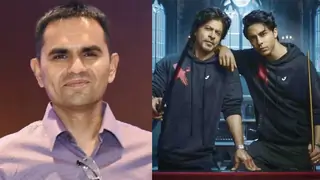| By A.L..Chougule |
| There's something about the number '3', at least in the TV world. If sources are to be believed, it seems that 'three' is the secret success mantra for entertainment channels these days. Perhaps that explains why more than half of the shows have 'three women' in important roles. This trend probably started with the success of Kasamh Se in which three sisters play the lead roles. after the recent five-year jump, another set of three sisters have been introduced. Then came Dulhann whose protagonist Vidya had to face three wicked sisters-in-law. In Maayka too three sisters play the lead roles and in Kyunki... Tulsi has three wicked bahus. Teen Bahuraaniya, has two sets of three 'bahus' — one group plays the role of protagonists and the other, that of antagonists. Even the recently launched shows Har Ghar... and Khwaish have three girls in the lead roles and the list continues. So what's the deal with three? Is it superstition yet again? Not many seem to be willing to admit to that. "There is nothing superstitious about '3'. Kasamh Se is Bani's story and Pia is the second lead whose actions affect Bani, which provides the drama. Same is the case with Kyunki. Tulsi's three bahus provide the required drama to take her story forward," says Balaji's chief creative director Nivedita Basu. Dheeraj Kumar of Creative Eye which produces Maayka and Ghar Ki Lakshmi Betiyaan feels it is a pure coincidence that some shows have three protagonists or antagonists. "all shows can't survive on one protagonist. You need more protagonists to give enough space and freedom to writers to open different tracks at appropriate time. Otherwise viewers will get bored watching just one protagonist. If there are more than three, it will become crowded," he elaborates. Though Sheel Kumar of Shreya Communications which produces Har Ghar..., Ek Ladki Anjani Si and Kaajjal says, "TV is not about number games and channels don't emphasise on a specific number of actors," the current trend paints a different picture altogether. |

























